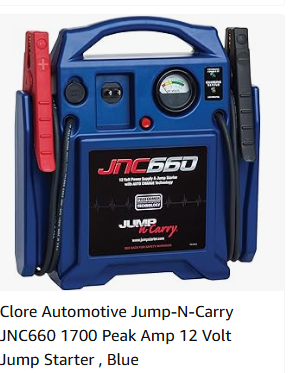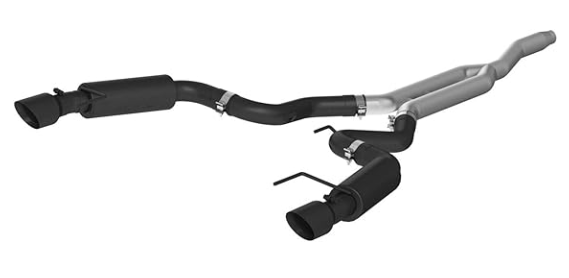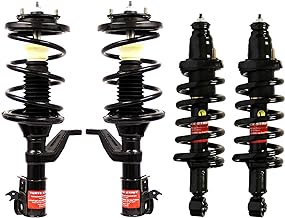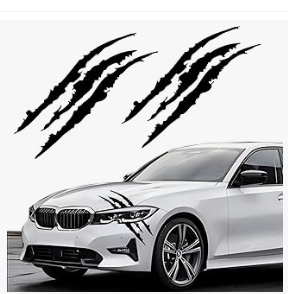As a car enthusiast and mechanic for over two decades, I’ve seen firsthand the toll that winter can take on vehicles. The salt, slush, and freezing temperatures wreak havoc on everything from your undercarriage to your battery.
But with the right care, your car can emerge from winter ready to tackle spring and summer with vigor.
Here are my top 10 car maintenance tips that will have your vehicle purring like a kitten after its long winter nap.
1. Undercarriage Cleanse
Winter’s cocktail of road salt and chemicals creates a corrosive nightmare for your car’s underbelly. The first step in post-winter care is a thorough undercarriage cleaning.
I once had a client who skipped this step for years.
When he finally brought his car in, the underside looked like a rust museum. Don’t let this be you.
Take your car to a professional wash with undercarriage cleaning capabilities. If you’re a DIY enthusiast, use a pressure washer, focusing on wheel wells and hard-to-reach areas.
Pay special attention to the frame rails, suspension components, and exhaust system.
These areas are particularly susceptible to rust and corrosion.
After cleaning, inspect the undercarriage for any signs of damage or wear. Look for loose or damaged parts, leaks, or areas where rust has started to form.
Catching these issues early can save you from costly repairs down the line.
For extra protection, apply a rust inhibitor after cleaning. These products create a barrier between the metal and moisture, helping to prevent future rust formation.
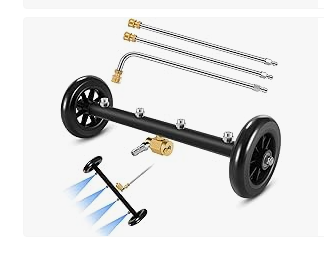
Some popular options include Fluid Film, POR-15, or Rust-Oleum’s Rust Reformer.
Pro Tip: Use a creeper board to inspect your undercarriage yourself. This low-lying platform on wheels allows you to easily slide under your vehicle for a close-up view.
Look for any signs of rust or damage that might need professional attention.
2. Tire TLC

Your tires bear the brunt of winter’s wrath. Now’s the time to show them some love.
Start by checking the tire pressure.
Winter’s temperature fluctuations can cause significant pressure changes. Adjust to the manufacturer’s recommended PSI, which you can usually find on a sticker inside the driver’s side door frame or in your owner’s manual.
Next, inspect for uneven wear, cuts, or bulges. Run your hand along the tread surface, feeling for any irregularities.
Pay close attention to the sidewalls, looking for any cracks or bulges that could show internal damage.
If you spot any issues, it’s time for a replacement.
Don’t forget to rotate your tires if you haven’t done so in the last 5,000-8,000 miles. Tire rotation confirms even wear across all four tires, extending their lifespan and improving your vehicle’s handling.
The typical rotation pattern is front-to-rear on the same side for front-wheel drive vehicles, and a cross pattern for rear-wheel or four-wheel drive vehicles.
If you’ve been running winter tires, it’s time to swap them out for all-season or summer tires. Winter tires are designed with a softer rubber compound that wears quickly in warmer temperatures.
Store your winter tires properly to extend their life.
Clean them thoroughly, place them in airtight bags, and store them in a cool, dry place away from direct sunlight.
Consider having your wheels balanced and aligned after the winter season. Potholes and rough winter roads can throw off your alignment, leading to uneven tire wear and poor handling.
A proper alignment will confirm your vehicle tracks straight and true, improving fuel efficiency and tire longevity.
3. Battery Boost
Cold temperatures are battery killers. After winter, your battery might be on its last legs without you even knowing it.

Start by visually inspecting the battery.
Look for any signs of corrosion on the terminals, cracks in the casing, or bulging sides.
Clean off any corrosion from the terminals using a mixture of baking soda and water. Apply the paste with an old toothbrush, then rinse with clean water and dry thoroughly.
This confirms a good connection between the battery terminals and cables.
If your battery has removable caps, check the fluid levels. The fluid should cover the lead plates inside each cell.
If it’s low, top it up with distilled water.
Never use tap water, as the minerals can damage the battery.
Use a multimeter to test the battery voltage. A healthy battery should read around 12.6 volts when the car is off.
If it’s significantly lower, it might be time for a replacement.
Start the engine and check the voltage again. It should rise to about 13.7 to 14.7 volts. If it doesn’t, your alternator might not be charging the battery properly.
Key Insight: Many auto parts stores offer free battery testing. Take advantage of this service if you’re unsure about your battery’s health.
They can perform a load test, which gives a more accurate picture of your battery’s condition than a simple voltage test.
If your battery is more than three years old and showing signs of weakness, consider replacing it proactively. It’s better to do this on your terms as opposed to being stranded with a dead battery at an inconvenient time.
4. Fluid Flush
Winter driving conditions can reduce and contaminate your car’s vital fluids. A comprehensive fluid check is crucial for maintaining your vehicle’s health and performance.
Start with the engine oil. Check the level and condition using the dipstick.
If it’s dark and gritty, or if you’re due for an oil change, now’s the time to do it.
Winter driving often involves more short trips, which can lead to increased moisture in the oil. A fresh oil change removes this moisture and any contaminants that have built up over the winter months.
Next, check your brake fluid. The fluid should be clear or slightly yellow.
If it’s dark or cloudy, it’s time for a replacement.
Brake fluid is hygroscopic, meaning it absorbs moisture from the air. This moisture can lead to corrosion in your brake system and reduced braking performance.
Inspect your power steering fluid. Low fluid levels can cause difficulty steering and may damage the power steering pump.
If the fluid is dark or has a burnt smell, it’s time for a flush and replacement.
Don’t forget about your transmission fluid. For automatic transmissions, check the level with the engine running and the transmission in park.
The fluid should be red or pink and should not have a burnt smell.
If it’s dark or smells burnt, have a professional inspect your transmission.
Your coolant system needs attention too. Check the coolant level and condition.
The coolant should be clear and free of debris.
If it’s rusty or cloudy, it’s time for a flush and replacement. This is also a good time to check all coolant hoses for cracks or softness, which could show impending failure.
Lastly, replace your windshield washer fluid with a summer formula. Winter washer fluid is designed to not freeze but may leave streaks in warmer weather.
A summer formula will give you a clearer view and help remove bugs and other summer debris more effectively.
5. Wiper Wisdom
Winter ice and snow are brutal on wiper blades. If your wipers are leaving streaks or chattering across the windshield, it’s time for new ones.
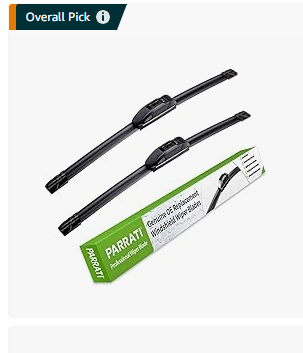
Inspect the rubber element closely.
Look for cracks, tears, or hardening in the rubber. Even small imperfections can significantly impact your wipers’ performance.
When replacing your wipers, consider upgrading to high-quality silicone wiper blades. These modern wipers offer several advantages over traditional rubber blades:
- Longevity: Silicone blades typically last twice as long as rubber blades.
- All-weather performance: They perform well in both extreme heat and cold.
- Water-repelling properties: Silicone blades leave a thin, hydrophobic coating on your windshield, causing water to bead up and roll off more easily.
- UV resistance: Unlike rubber, silicone doesn’t degrade quickly in sunlight.
Don’t forget to clean your windshield thoroughly before installing new wipers. Use a glass cleaner and a microfiber cloth to remove any built-up grime or residue.
This will help your new wipers perform at their best and extend their lifespan.
While you’re focused on visibility, take a moment to check and clean all of your vehicle’s lights. Winter grime can accumulate on headlights, taillights, and turn signals, reducing their effectiveness.
Clean them thoroughly and check for any burnt-out bulbs or cracks in the lenses.
6. Brake Inspection
Your brake system takes a beating during winter. Salt and moisture can lead to corrosion and reduced performance.
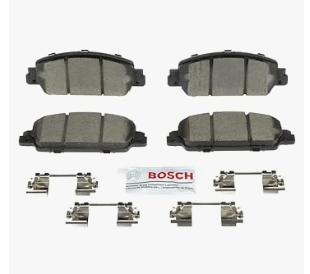
A thorough brake inspection is crucial for your safety and your vehicle’s longevity.
Start by listening for any unusual noises when braking. Squealing, grinding, or pulsing sounds are all indicators that your brakes need attention.
Pay attention to how your brake pedal feels.
If it’s soft or spongy, or if it goes closer to the floor than usual, you might have air in your brake lines or worn brake components.
Check your brake fluid levels and condition. The fluid should be at the “Full” line on the reservoir and should be clear or slightly yellow.
If it’s low, top it off with the type specified in your owner’s manual.
If the fluid is dark or dirty, it’s time for a change. Brake fluid absorbs moisture over time, which can lead to corrosion in your brake system.
Inspect your brake pads and rotors for wear. Many vehicles have a small window in the caliper where you can see the pad thickness.
If the pads are less than 1/4 inch thick, it’s time for replacement.
Look at your rotors for any signs of scoring, warping, or excessive rust.
If you notice any pulsing or pulling when braking, have a professional check your system immediately. These symptoms could show warped rotors or sticking brake calipers, both of which can significantly impact your braking performance.
Don’t forget to check your emergency brake. Engage it and make sure it holds the car securely.
If it feels loose or doesn’t hold well, it may need adjustment or repair.
7. Air Filter Refresh
Winter conditions can clog your engine’s air filter faster than usual. A clogged filter reduces engine performance and fuel efficiency.
It’s like trying to breathe through a straw – your engine has to work much harder to get the air it needs.
Remove and inspect your air filter. Most air filters are easily accessible under the hood, often in a black plastic box.

Consult your owner’s manual if you’re unsure of its location.
Take the filter out and hold it up to a bright light. If you can’t see light passing through it, it’s time for a replacement.
Even if the filter doesn’t look too dirty, consider how long it’s been since you last changed it. Most manufacturers recommend changing the air filter every 15,000 to 30,000 miles, but this can vary based on your driving conditions.
If you can’t remember the last time you changed it, now’s probably a good time.
When replacing your air filter, consider upgrading to a high-performance air filter. These filters, often made from cotton or synthetic materials, can improve engine protection and even boost performance slightly.
They typically allow for better airflow while still trapping small particles effectively.
While you’re at it, don’t forget about your cabin air filter. This filter cleans the air that comes into your car’s interior through the heating and air conditioning system.
A clean cabin air filter improves air quality inside your vehicle and helps your HVAC system work more efficiently.
Most cabin air filters are located behind the glove box and can be replaced easily with basic tools.
8. Suspension and Alignment Check
Winter potholes and rough roads can throw your suspension and alignment out of whack. Proper alignment and suspension are crucial for safe handling, even tire wear, and fuel efficiency.
Pay attention to how your car handles. If you notice any unusual noises when going over bumps, or if your car pulls to one side, it’s time for a check-up.
These symptoms could show worn shock absorbers, damaged springs, or misaligned wheels.
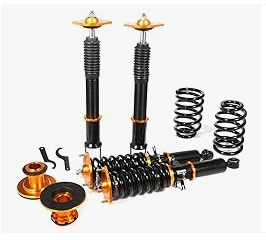
Inspect your shock absorbers and struts for any signs of leaks or damage. Look for oil stains or wetness on the surface of these components.
Bounce each corner of your car and observe how it settles.
If it continues to bounce after you let go, your shocks or struts may be worn.
Check your ball joints and tie rod ends. These components are crucial for steering and can wear out over time, especially after a harsh winter.
Look for any excessive play or movement in these parts when the wheel is jacked up.
Have a professional check your wheel alignment, especially if you notice uneven tire wear. Proper alignment confirms that all four wheels are pointing in the right direction, which is essential for even tire wear and optimal handling.
Many tire shops offer free alignment checks with tire purchases or rotations.
Don’t forget about your vehicle’s bushings. These rubber components absorb vibrations and allow controlled movement in your suspension system.
Over time, and especially after exposure to winter conditions, these can crack or deteriorate.
Listen for clunking noises when going over bumps or during sharp turns, as these can show worn bushings.
9. Exterior Pampering
Winter can leave your car’s exterior looking dull and potentially damaged. A thorough cleaning and protection routine is essential not just for aesthetics, and for preserving your vehicle’s value and preventing long-term damage.
Start with a comprehensive wash, including the undercarriage and wheel wells. Use a car-specific soap, not household detergent, which can strip away protective waxes and sealants.
Work from top to bottom, using separate mitts or cloths for the body and wheels to avoid transferring brake dust and grit to your paint.
After washing, use a clay bar treatment to remove embedded contaminants that regular washing can’t get. Run your hand over the paint surface in a plastic bag – if it feels rough, you need to clay.
This process removes tiny particles of industrial fallout, tree sap, and other bonded contaminants, leaving your paint smooth as glass.
Once your paint is clean and smooth, it’s time for protection. Apply a high-quality wax or ceramic coating.
These products make your car shine and provide a barrier against UV rays, acid rain, and other environmental contaminants.
Ceramic coatings offer longer-lasting protection than traditional waxes, often lasting for months or even years with proper care.
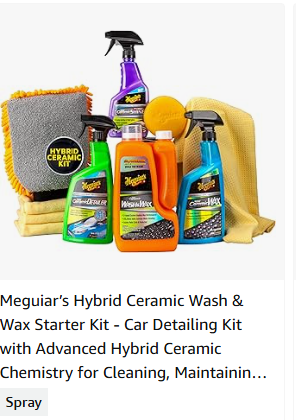
Don’t forget to inspect for and touch up any paint chips to prevent rust. Small touch-up pens are available for most car colors and can help prevent small chips from turning into larger rust spots.
For larger areas of damage, consider professional repair to maintain your car’s value and appearance.
Pay special attention to your headlights. Winter conditions can cause them to become foggy or yellowed, reducing visibility and detracting from your car’s appearance.
Use a headlight restoration kit to bring them back to clarity.
This improves your car’s looks and enhances your nighttime visibility and safety.
Lastly, don’t neglect your trim and rubber seals. Apply a rubber protectant to door seals, weatherstripping, and other rubber components.
This helps prevent cracking and drying, ensuring these parts continue to function properly and keep water out of your vehicle.
10. HVAC Health Check
As temperatures rise, you’ll want to confirm your air conditioning system is ready for action. A well-functioning HVAC system is crucial not just for comfort, and for safety, as it helps defog your windows quickly.
Start by checking your A/C performance. Turn the system on full blast and make sure it’s blowing cold air from all vents.
If your A/C isn’t blowing as cold as it should, it might need a recharge or repair.
Low refrigerant levels can show a leak in the system, which should be addressed by a professional.
Pay attention to any unusual smells when you turn on your A/C. A musty odor could show mold growth in your evaporator core or air ducts.

This smells unpleasant but can also be a health hazard.
Replace your cabin air filter for improved air quality. A clogged filter reduces air flow but can also harbor bacteria and mold.
Most cabin filters can be replaced easily, often located behind the glove box.
Clean your air vents using compressed air or a soft brush. This removes dust and debris that has accumulated over the winter months.
For a deeper clean, use a disinfectant spray designed for car interiors, following the product instructions carefully.
Don’t forget to run your heater for a few minutes, even though it’s getting warmer. This helps prevent moisture buildup in the system and keeps all components functioning properly year-round.
If you notice any issues with your HVAC system, have it checked by a professional before the heat of summer arrives. Problems like low refrigerant or a faulty compressor are best addressed early to avoid being stuck without A/C on a hot day.
Key Takeaways:
- Clean your undercarriage thoroughly to prevent rust and corrosion.
- Check and adjust tire pressure, and consider switching to summer tires.
- Test your battery and clean the terminals.
- Inspect and top off all fluids.
- Replace worn wiper blades.
- Check your brake system for wear and corrosion.
- Replace your air filter if needed.
- Have your suspension and alignment checked.
- Clean and protect your car’s exterior.
- Ensure your A/C system is ready for summer.
People Also Asked
How often should I wash my car after winter?
Washing your car every 1-2 weeks after winter helps remove salt and other corrosive materials. Pay special attention to the undercarriage during these washes.
Can I use regular soap to wash my car?
No, regular household soap can strip away protective waxes and coatings. Use a car-specific soap designed to clean without damaging your vehicle’s finish.
How do I know if my car battery is dying?
Signs of a dying battery include slow engine crank, dim headlights, and electrical issues. If your battery is more than 3 years old, consider having it tested.
What’s the best way to remove salt stains from car carpets?
Mix equal parts white vinegar and water in a spray bottle. Spray the solution on the stains, let it sit for a few minutes, then blot with a clean cloth.
Repeat if necessary.
How often should I rotate my tires?
Most manufacturers recommend rotating tires every 5,000 to 8,000 miles. This confirms even wear and extends the life of your tires.
Is it necessary to wax my car after winter?
Yes, waxing your car after winter provides a protective barrier against spring and summer elements, helping to prevent paint damage and maintain your car’s appearance.
What’s the difference between all-season and summer tires?
All-season tires provide adequate performance in various conditions, while summer tires offer better handling and braking in warm weather but poor performance in cold or snowy conditions.
How can I improve my car’s fuel efficiency after winter?
Ensure proper tire inflation, replace dirty air filters, use the recommended grade of motor oil, and remove any unnecessary weight from your vehicle to improve fuel efficiency.
When should I replace my windshield wipers?
Replace your wipers when you notice streaking, skipping, or splitting. Typically, wiper blades need replacement every 6 to 12 months.
How do I know if my car needs an alignment?
Signs that your car needs an alignment include uneven tire wear, the vehicle pulling to one side while driving, or the steering wheel being off-center when driving straight.
